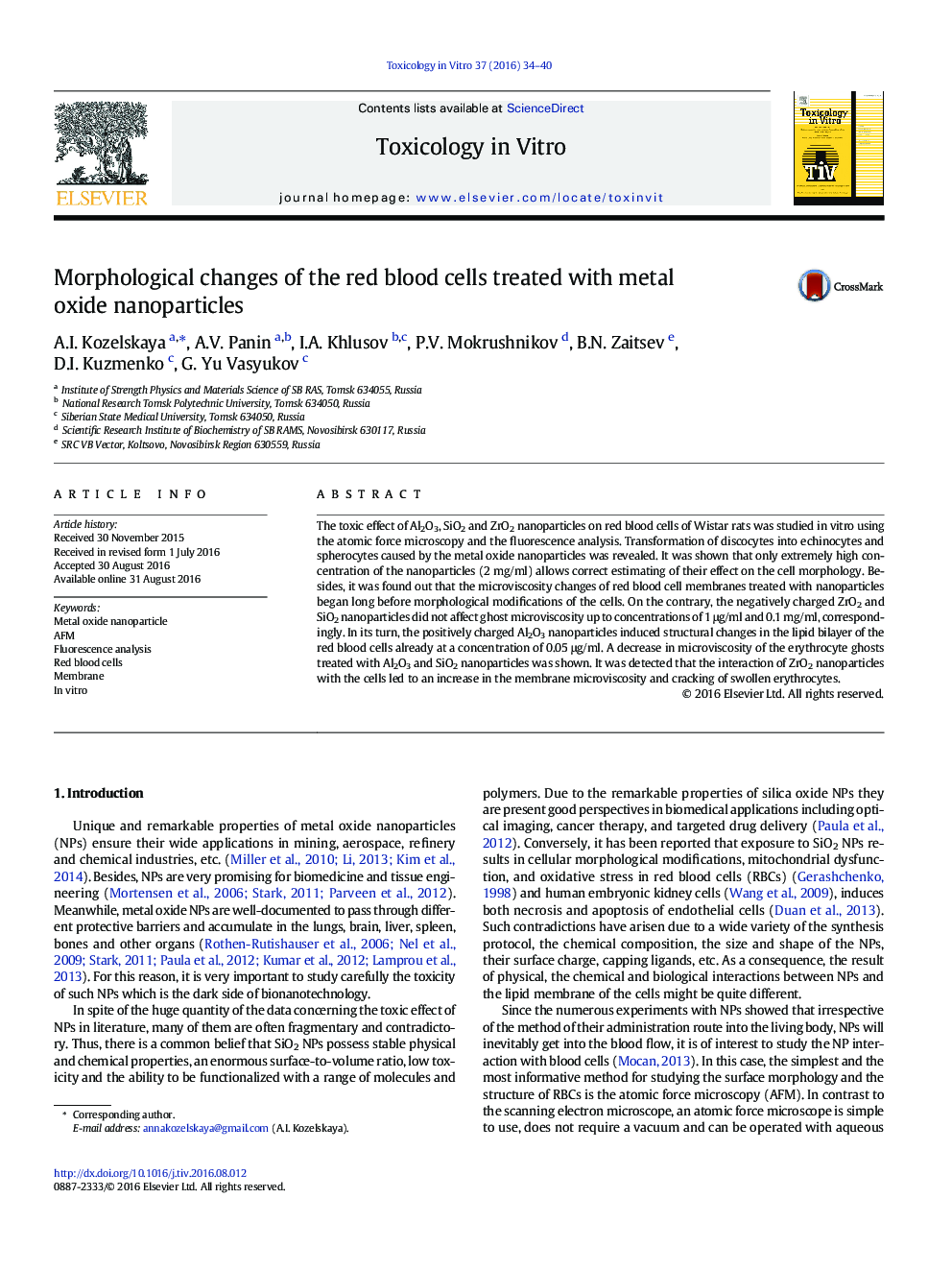| Article ID | Journal | Published Year | Pages | File Type |
|---|---|---|---|---|
| 2602407 | Toxicology in Vitro | 2016 | 7 Pages |
•The toxic effect of Al2O3, SiO2 and ZrO2 nanoparticles on RBCs is revealed.•NPs result in transformation of RBCs (discocytes) into echinocytes and spherocytes.•Microviscosity change of RBCs treated with NPs begins prior to their shape alteration.
The toxic effect of Al2O3, SiО2 and ZrО2 nanoparticles on red blood cells of Wistar rats was studied in vitro using the atomic force microscopy and the fluorescence analysis. Transformation of discocytes into echinocytes and spherocytes caused by the metal oxide nanoparticles was revealed. It was shown that only extremely high concentration of the nanoparticles (2 mg/ml) allows correct estimating of their effect on the cell morphology. Besides, it was found out that the microviscosity changes of red blood cell membranes treated with nanoparticles began long before morphological modifications of the cells. On the contrary, the negatively charged ZrO2 and SiO2 nanoparticles did not affect ghost microviscosity up to concentrations of 1 μg/ml and 0.1 mg/ml, correspondingly. In its turn, the positively charged Al2O3 nanoparticles induced structural changes in the lipid bilayer of the red blood cells already at a concentration of 0.05 μg/ml. A decrease in microviscosity of the erythrocyte ghosts treated with Al2O3 and SiO2 nanoparticles was shown. It was detected that the interaction of ZrO2 nanoparticles with the cells led to an increase in the membrane microviscosity and cracking of swollen erythrocytes.
